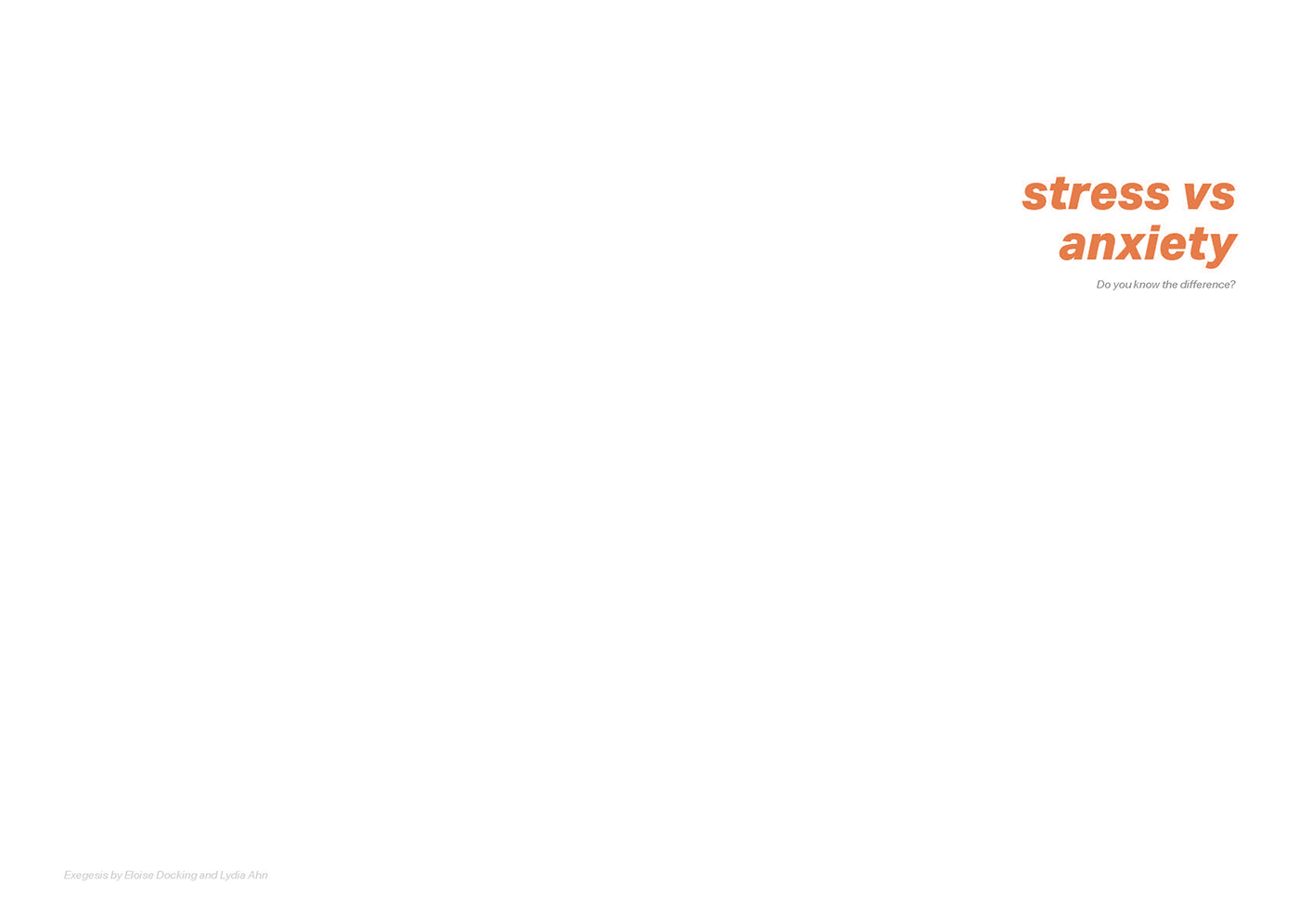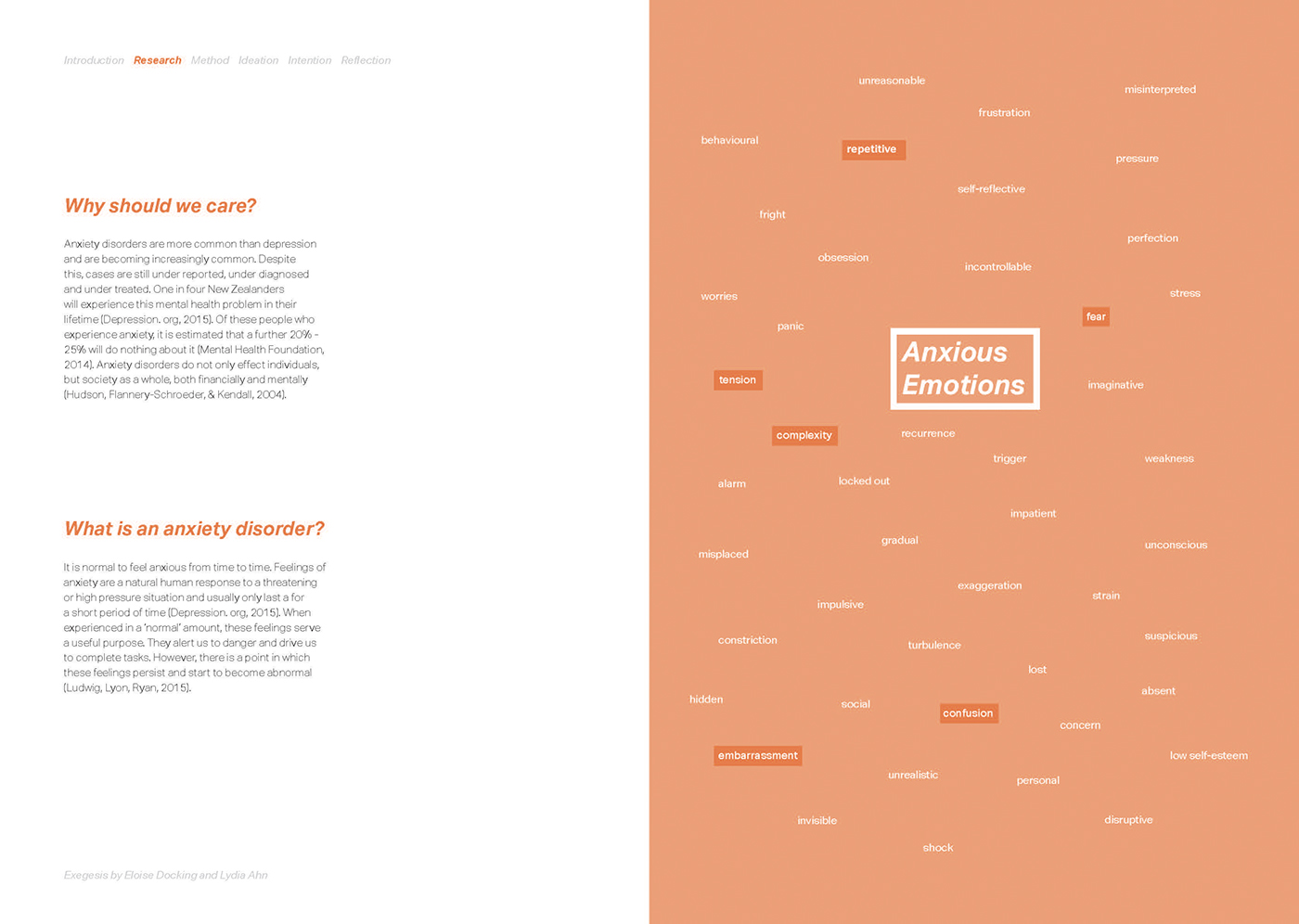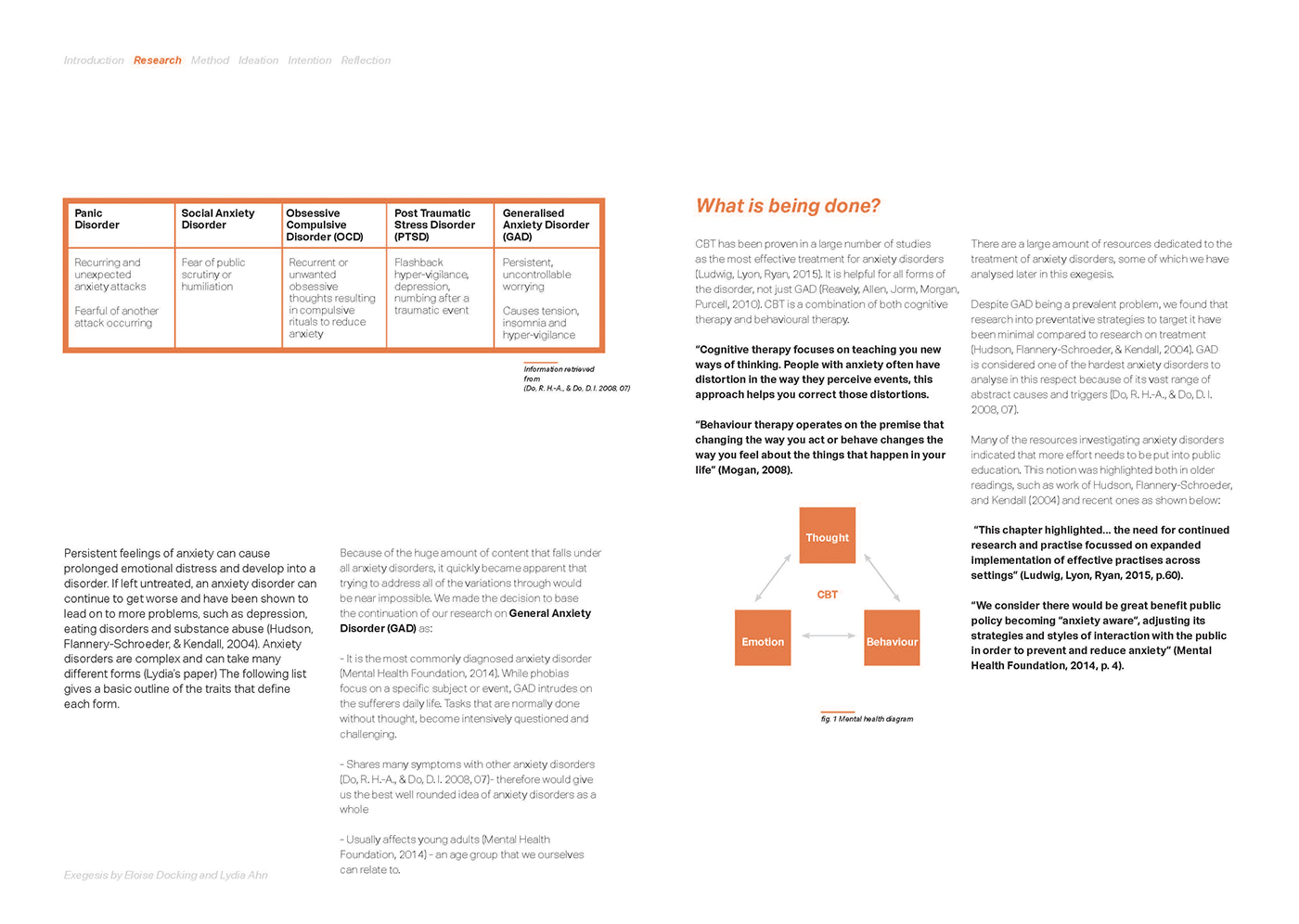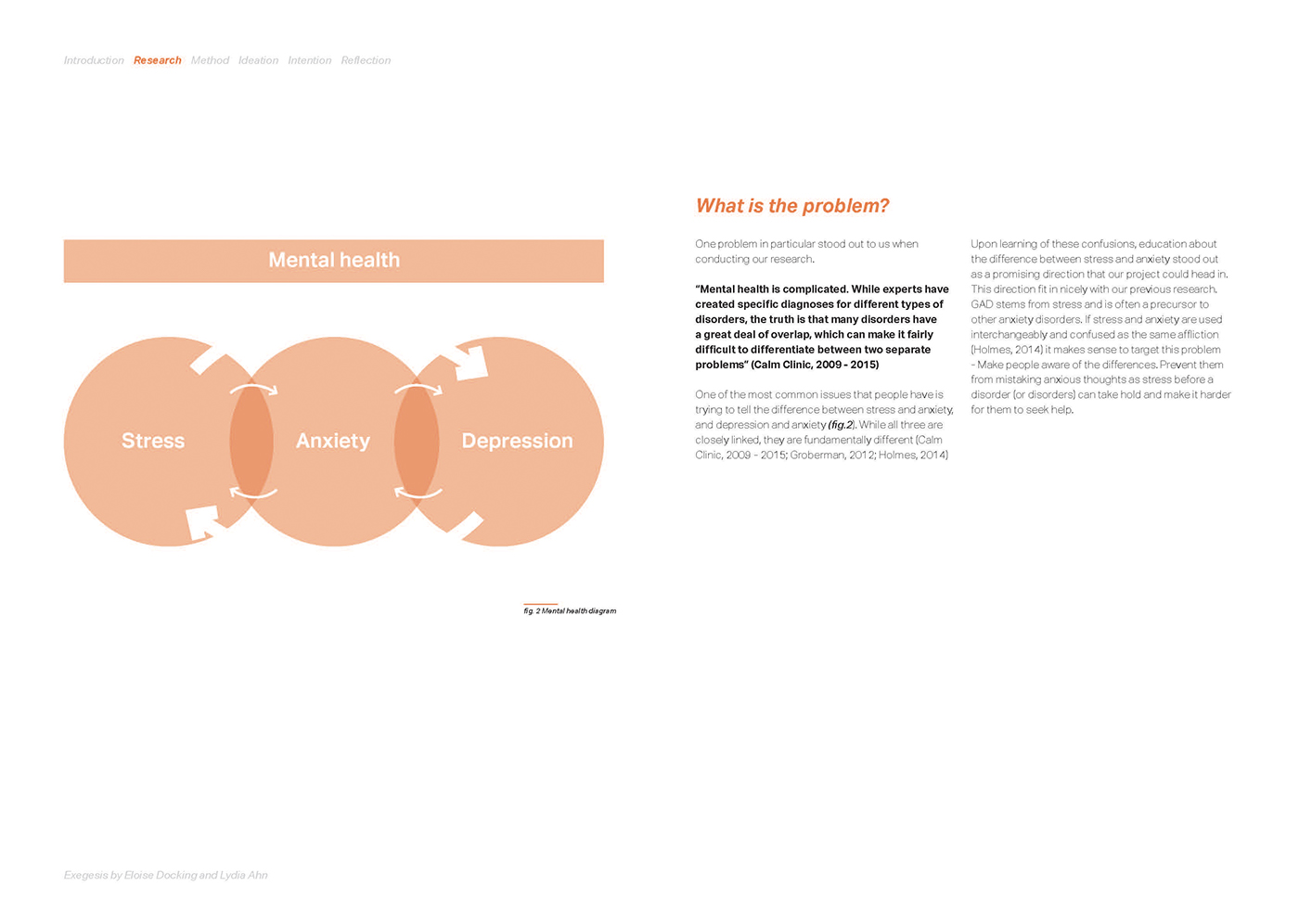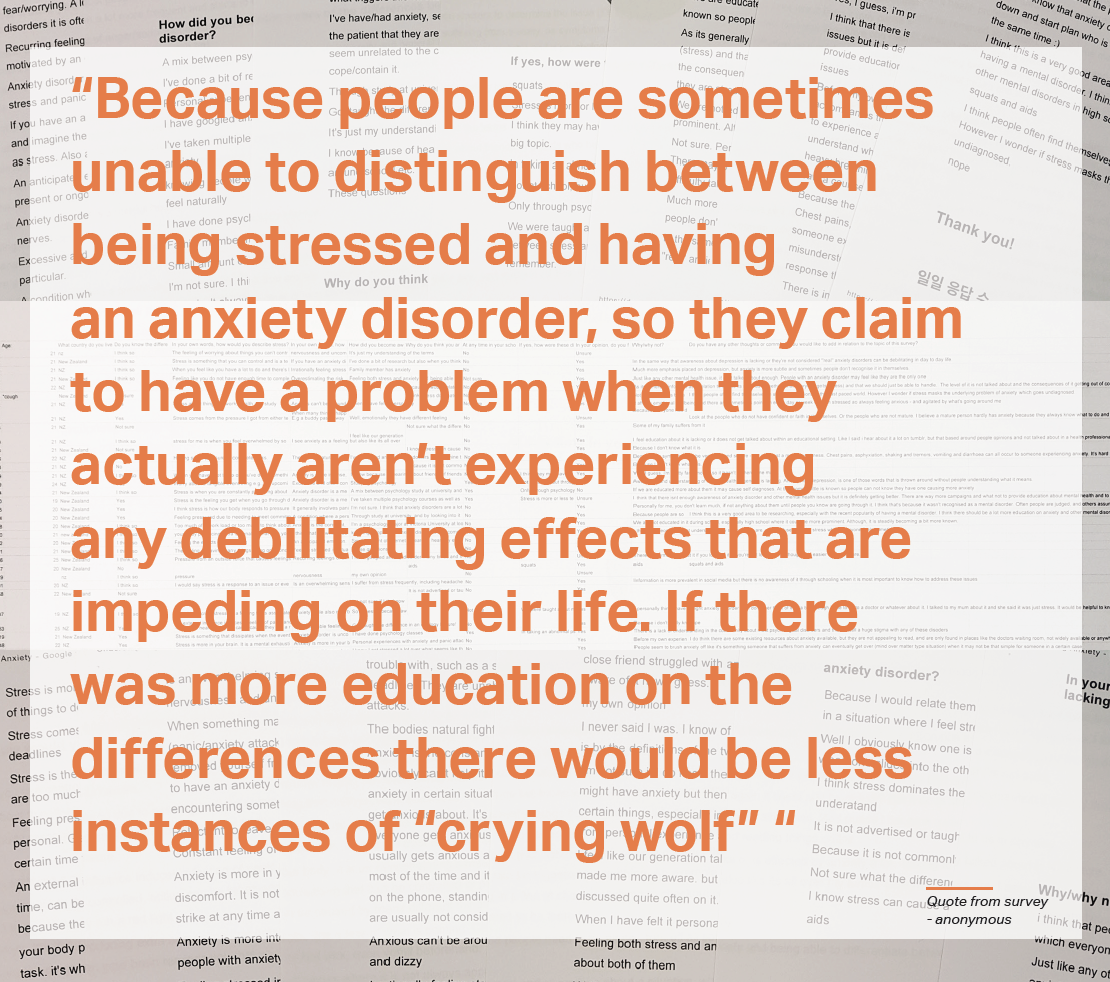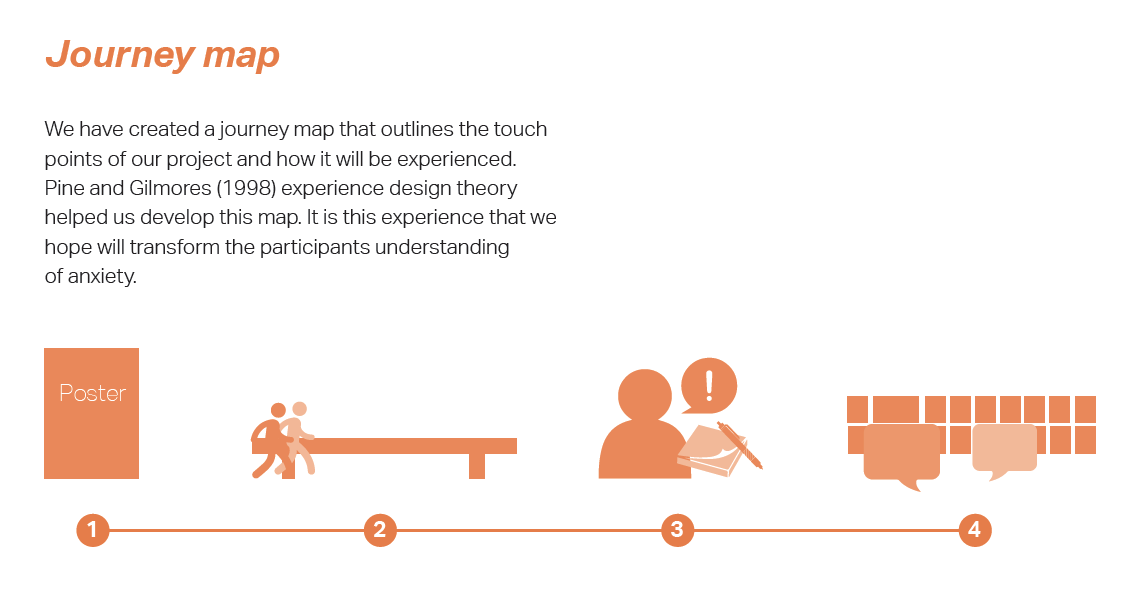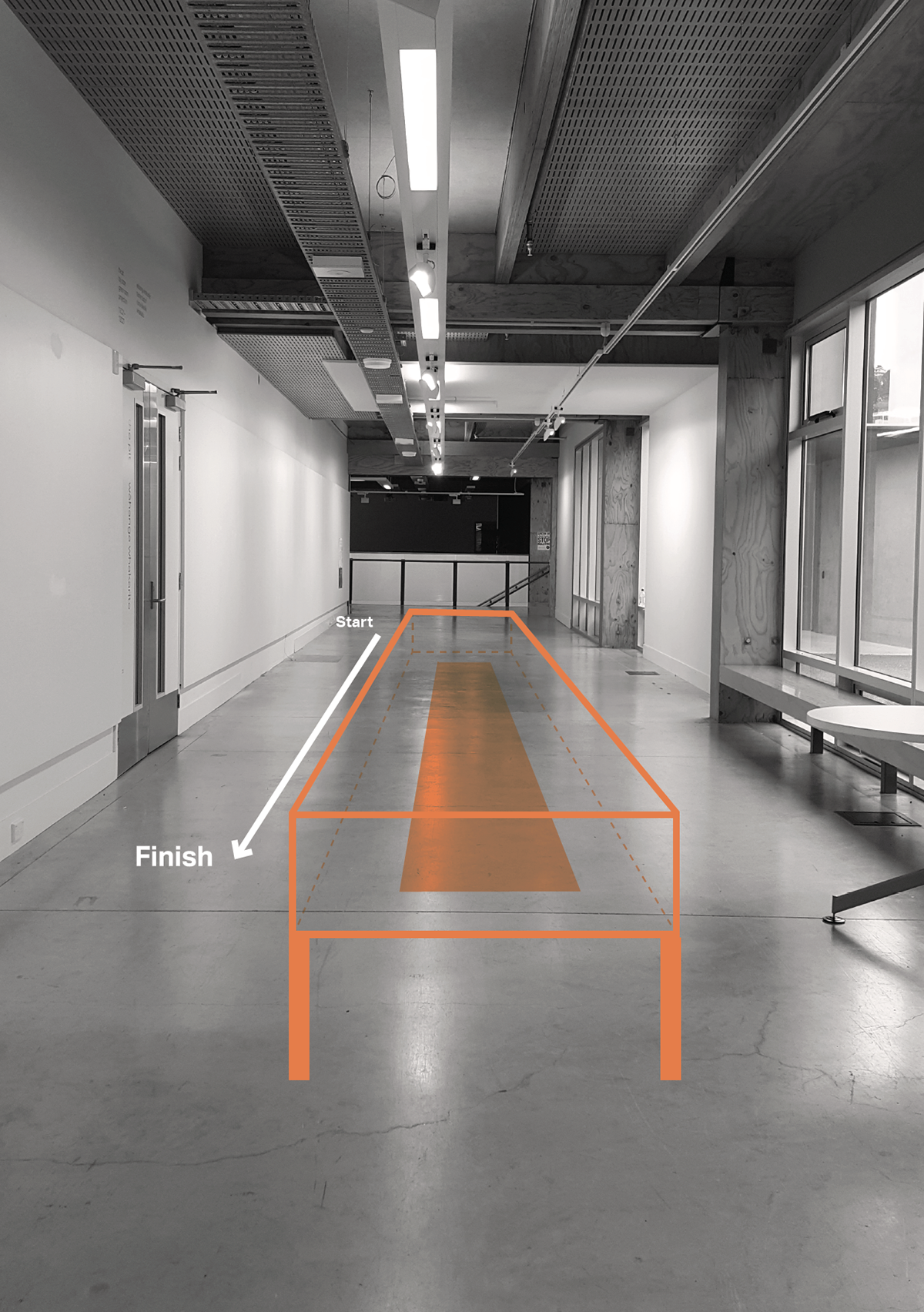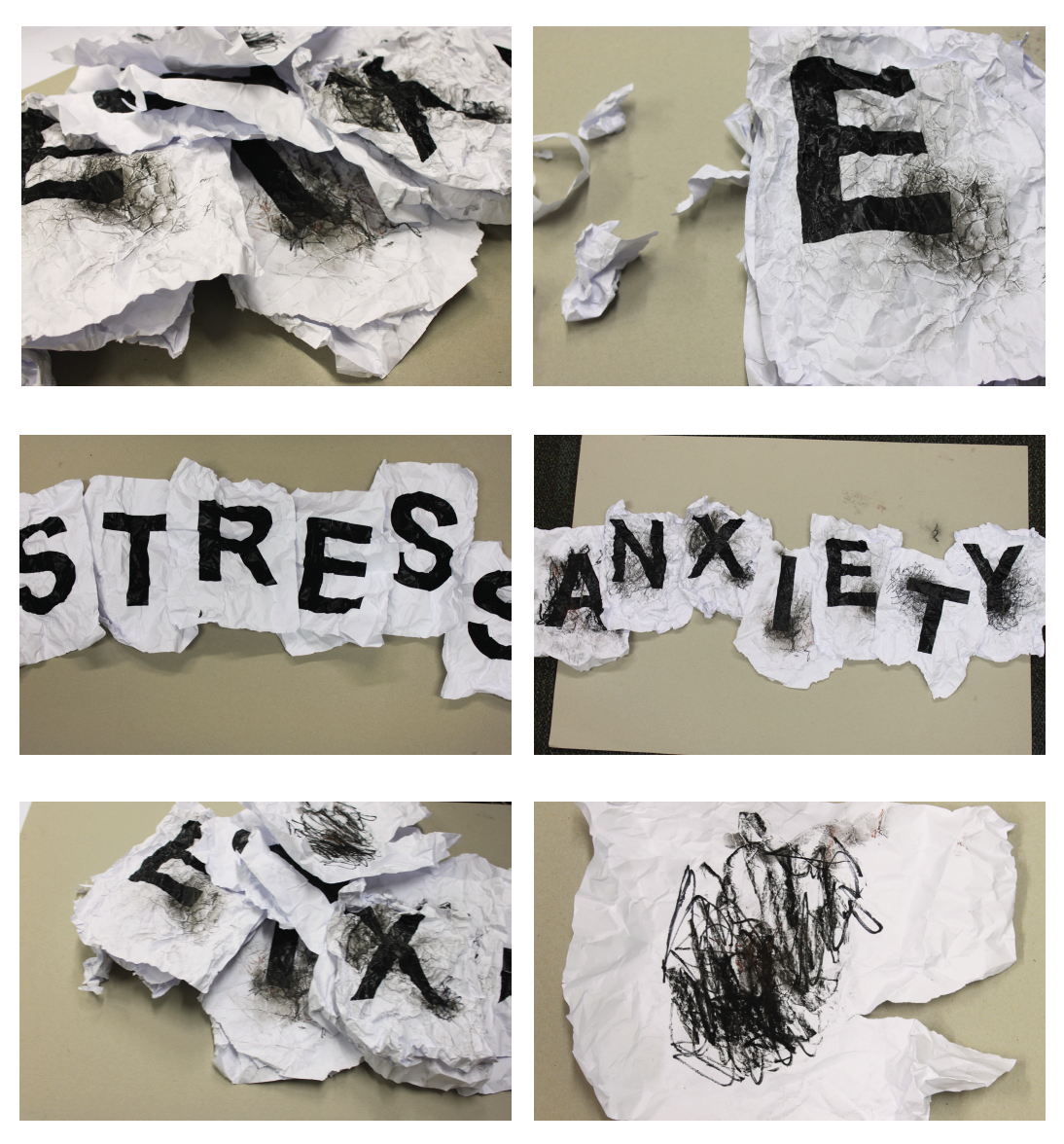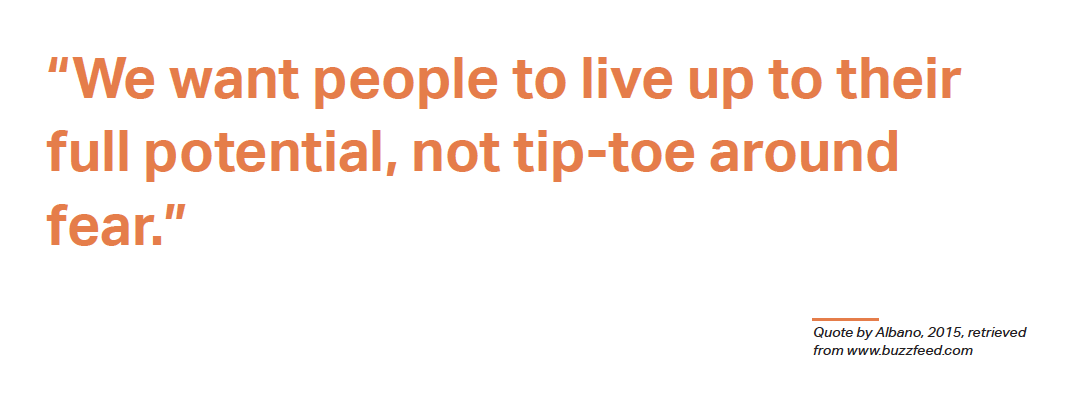Stress & Anxiety - Do you know the Difference?
Visual communication design can be used to create resources that enable young New Zealanders transitioning into a university environment to better understand and address when stress is developing into an anxiety disorder.
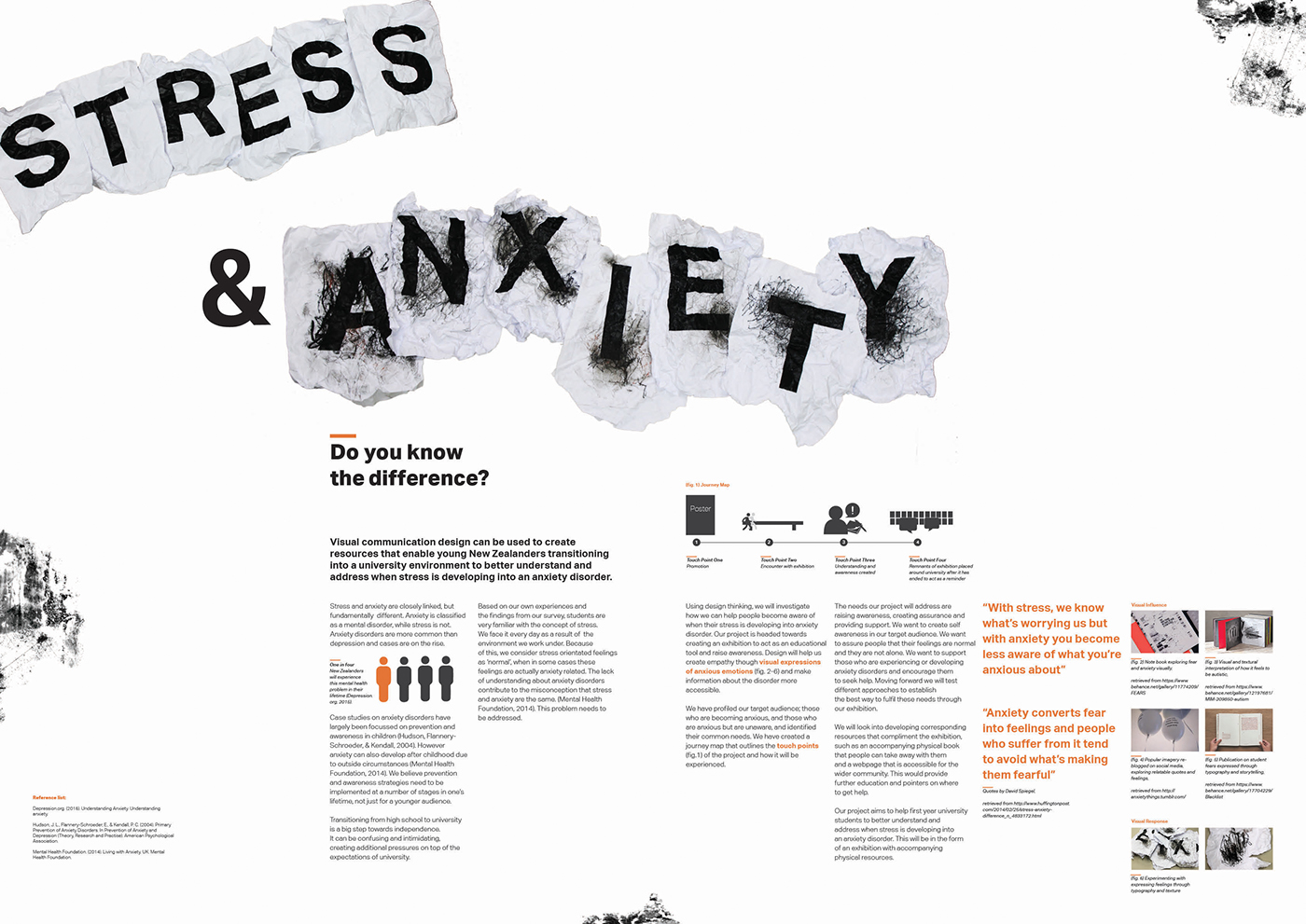
Stress and anxiety are closely linked, but fundamentally different. Anxiety is classified as a mental disorder, while stress is not. Anxiety disorders are more common than depression and cases are on the rise.
Case studies on anxiety disorders have largely been focussed on prevention and awareness in children (Hudson, Flannery-Schroeder, & Kendall, 2004). However anxiety can also develop after childhood due to outside circumstances (Mental Health Foundation, 2014). We believe prevention and awareness strategies need to be implemented at a number of stages in one’s lifetime, not just for a younger audience.
Transitioning from high school to university is a big step towards independence. It can be confusing and intimidating, creating additional pressures on top of the expectations of university. Based on our own experiences and the findings from our survey, students are very familiar with the concept of stress. We face it every day as a result of the environment we work under. Because of this, we consider stress orientated feelings as ‘normal’, when in some cases these feelings are actually anxiety related. The lack of understanding about anxiety disorders contribute to the misconception that stress and anxiety are the same. (Mental Health Foundation, 2014). This problem needs to
be addressed.
Using design thinking, we will investigate how we can help people become aware of when their stress is developing into anxiety disorder. Our project is headed towards creating an exhibition
to act as an educational tool and raise awareness. Design will help us create empathy though
visual expressions of anxious emotions (fig. 2-6) and make information about the disorder
more accessible.
We have profiled our target audience; those who are becoming anxious, and those who are anxious but are unaware, and identified their common needs. We have created a journey map that outlines the touch points (fig.1) of the project and how it will be experienced.
The needs our project will address are raising awareness, creating assurance and providing support. We want to create self awareness in our target audience. We want to assure people that their feelings are normal and they are not alone. We want to support those who are experiencing or developing anxiety disorders and encourage them to seek help. Moving forward we will test different approaches to establish the best way to fulfil these needs through our exhibition.
We will look into developing corresponding resources that compliment the exhibition, such as an accompanying physical book that people can take away with them and a webpage that is accessible for the wider community. This would provide further education and pointers on where to get help.
Our project aims to help first year university students to better understand and address when stress is developing into an anxiety disorder. This will be in the form of an exhibition with accompanying physical resources.
Exegesis
